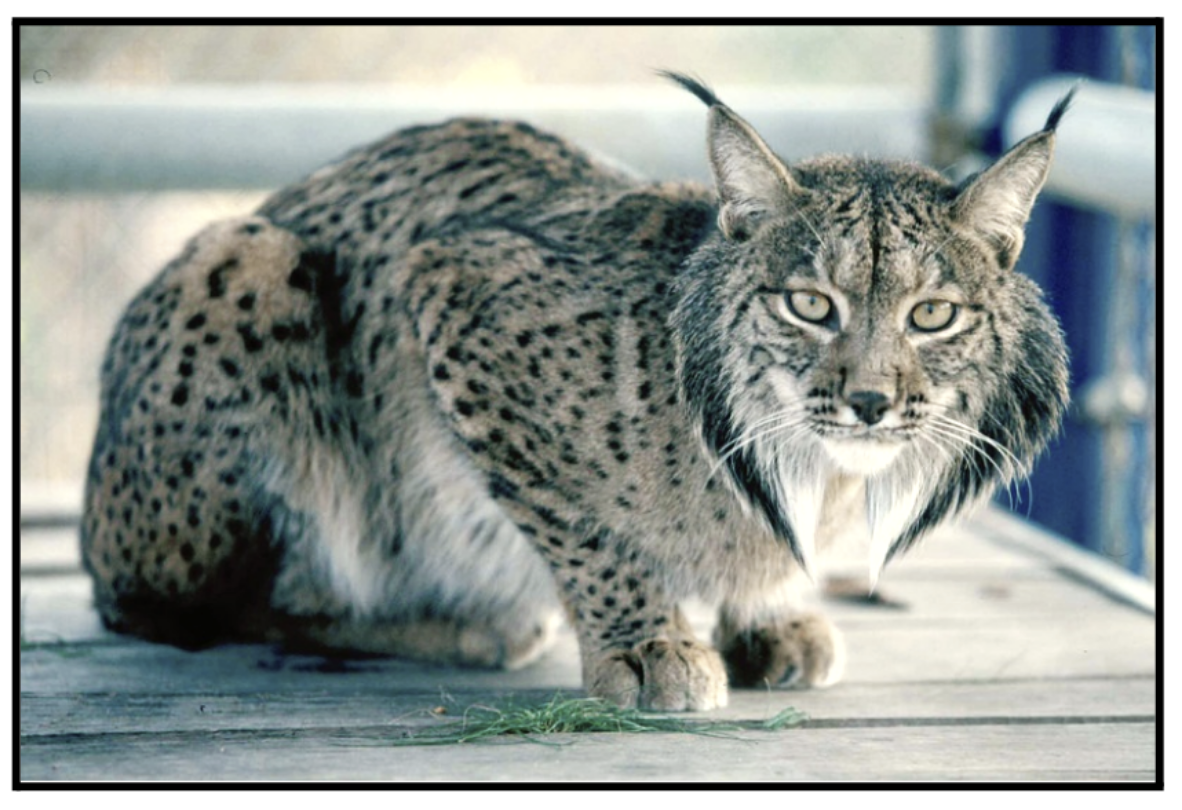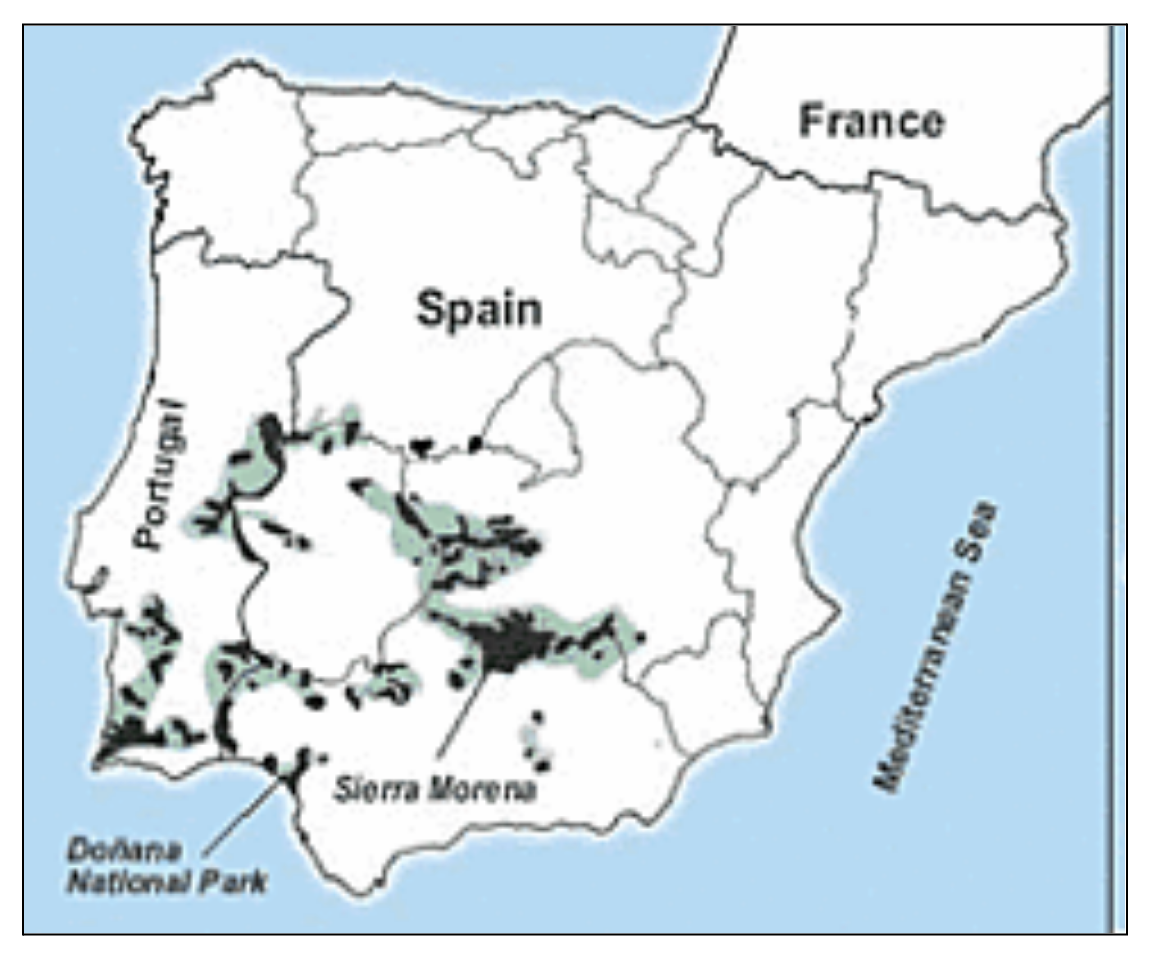News Excerpt:
The Iberian lynx, has been reclassified from "endangered" to "vulnerable" by the International Union for Conservation of Nature (IUCN).

More about the progress:
- Its population grew from just 62 mature individuals in 2001 to 648 in 2022.
- The combined population of young and mature lynxes is now estimated to exceed 2,000.
- The recent population increase is largely attributed to focused conservation efforts.
- Boosting the numbers of the lynx's primary food source, the European rabbit, which is also endangered.
- Conservation programs have released hundreds of captive-bred lynxes into the wild and restored their natural habitats, such as scrublands and forests.
About Iberian Lynx:
- IUCN Status - Vulnerable
- Geographical Spread of Population:
-
- The Iberian lynx is native to the Iberian Peninsula, which includes Spain and Portugal.
- The latest census data reveals 14 stable and reproducing clusters of these wild cats, with 13 in Spain and one in Portugal.
- Historically, the lynx was widespread across the Iberian Peninsula, but its numbers began to decline sharply in the 1960s due to habitat loss, poaching, and road accidents, pushing the species to the brink of extinction.

- Lynxes generally give birth between March and April. The average litter size is three, with rarely more than two young surviving weaning.
- The gestation period is around 60-66 days. Rearing the young is the exclusive task of females.
- Kittens remain in the natal den for between two and four weeks, and by four months can accompany their mother on hunts. The Iberian lynx feed mostly on wild rabbits.
- Except for the mating period, Iberian lynx are mostly solitary animals.
- Threats to Species:
-
- Fragmentation and destruction of habitats due to infrastructure development.
-
- Expansion of urban areas leads to habitat loss and pollution.
-
- Large-scale monoculture plantations replace diverse ecosystems.
-
- Overexploitation leads to population declines and extinction risks.
-
- Spread of viral/prion-induced diseases that can devastate native species populations.
- Climate Change & Severe Weather: Changes in climate causing shifts in habitat ranges.


